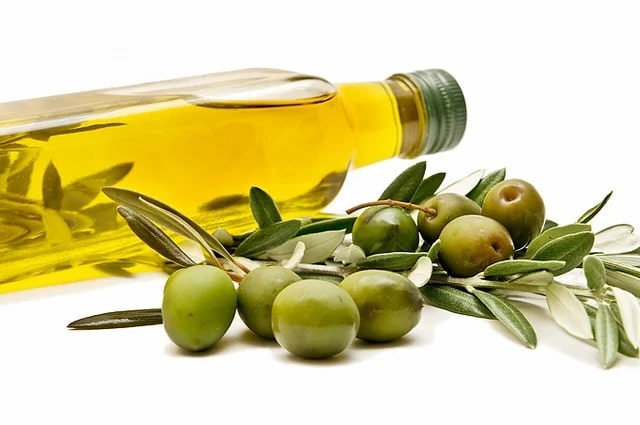Olives Meaning
Olives are the fruit of the olive tree, a tree native to the Mediterranean and Asia Minor. They are also known as olivas in some countries. The main producer of olives worldwide is Spain, followed by Italy and Greece. In America, they are also grown mainly in Argentina and Chile.
This fruit is ovoid in shape, measuring 1 to 3 cm in length, and contains a seed inside. It is initially green in colour but as it matures after a few months it takes on an intense black colour.
Although olives are widely consumed in both their green and black forms, they are also processed to obtain olive oil, a product highly appreciated in world gastronomy for its characteristic flavor as well as for its large number of beneficial properties for the body.
Olives are a food known since ancient times.
In the biblical stories we can see how olives and the olive tree were well known by cultures such as the ancient Hebrews and various ethnic groups of the time. They not only consumed olives but also obtained their oil which they used in various rituals in which prominent personalities were anointed.
Islamic culture also gives it great importance; for them the olive tree is a blessed tree, among other things, for being a source of light. This may be derived from the fact that oil was then used to light the lamps that provided the necessary light so that people could sit and listen to the teachings of their prophets, thus achieving enlightenment.
Nutritional value of olives
The composition of olive fruit is predominantly oily and lipid-soluble vitamins such as vitamin A and vitamin E. Every 100 grams of olives provide about 150 calories.
The predominant fatty acid in the composition of olives is oleic acid, in addition to linoleic (Omega 6) and linolenic (Omega 3). Black olives have a higher proportion of oils than green olives.
Health benefits of olives
Fatty acids, especially omega-3 fatty acids, are associated with a protective effect on the cardiovascular system, helping to reduce bad cholesterol (LDL) and increase good cholesterol (HDL), thereby improving the lipid profile of the blood. This leads to a lower risk of heart attacks or strokes.
Its vitamin A and vitamin E content also provide olives with an antioxidant effect, thereby delaying aging and the appearance of a series of degenerative disorders in various organs and systems.
Olives Meaning in Hindi
जैतून जैतून के पेड़ का फल है, जो भूमध्य सागर और एशिया माइनर का मूल निवासी है। कुछ देशों में इन्हें ओलिवा के नाम से भी जाना जाता है। दुनिया भर में जैतून का मुख्य उत्पादक स्पेन है, उसके बाद इटली और ग्रीस हैं। अमेरिका में, इन्हें मुख्य रूप से अर्जेंटीना और चिली में भी उगाया जाता है।
यह फल अंडाकार आकार का होता है, जिसकी लंबाई 1 से 3 सेमी होती है, और इसके अंदर एक बीज होता है। यह शुरू में हरे रंग का होता है, लेकिन कुछ महीनों के बाद जब यह पक जाता है तो इसका रंग गहरा काला हो जाता है।
हालाँकि जैतून का सेवन उनके हरे और काले दोनों रूपों में व्यापक रूप से किया जाता है, लेकिन इन्हें जैतून का तेल प्राप्त करने के लिए भी संसाधित किया जाता है, जो अपने विशिष्ट स्वाद के साथ-साथ शरीर के लिए कई लाभकारी गुणों के लिए विश्व गैस्ट्रोनॉमी में अत्यधिक सराहा जाने वाला उत्पाद है।
जैतून एक ऐसा खाद्य पदार्थ है जिसे प्राचीन काल से जाना जाता है।
बाइबिल की कहानियों में हम देख सकते हैं कि कैसे जैतून और जैतून का पेड़ प्राचीन हिब्रू और उस समय के विभिन्न जातीय समूहों जैसी संस्कृतियों द्वारा अच्छी तरह से जाना जाता था। वे न केवल जैतून खाते थे बल्कि उनका तेल भी प्राप्त करते थे जिसका उपयोग वे विभिन्न अनुष्ठानों में करते थे जिसमें प्रमुख व्यक्तियों का अभिषेक किया जाता था।
इस्लामी संस्कृति भी इसे बहुत महत्व देती है; उनके लिए जैतून का पेड़ अन्य चीजों के अलावा, प्रकाश का स्रोत होने के कारण एक धन्य वृक्ष है। यह इस तथ्य से लिया जा सकता है कि तब तेल का उपयोग उन दीयों को जलाने के लिए किया जाता था जो आवश्यक प्रकाश प्रदान करते थे ताकि लोग बैठ सकें और अपने पैगम्बरों की शिक्षाओं को सुन सकें, इस प्रकार ज्ञान प्राप्त कर सकें।
जैतून का पोषण मूल्य
जैतून के फल की संरचना मुख्य रूप से तैलीय और लिपिड-घुलनशील विटामिन जैसे विटामिन ए और विटामिन ई है। प्रत्येक 100 ग्राम जैतून लगभग 150 कैलोरी प्रदान करता है।
जैतून की संरचना में प्रमुख फैटी एसिड ओलिक एसिड है, इसके अलावा लिनोलिक (ओमेगा 6) और लिनोलेनिक (ओमेगा 3) भी है। काले जैतून में हरे जैतून की तुलना में तेल का अनुपात अधिक होता है।
जैतून के स्वास्थ्य लाभ
फैटी एसिड, खास तौर पर ओमेगा-3 फैटी एसिड, हृदय प्रणाली पर सुरक्षात्मक प्रभाव डालते हैं, खराब कोलेस्ट्रॉल (LDL) को कम करने और अच्छे कोलेस्ट्रॉल (HDL) को बढ़ाने में मदद करते हैं, जिससे रक्त के लिपिड प्रोफाइल में सुधार होता है। इससे दिल के दौरे या स्ट्रोक का जोखिम कम होता है।
इसकी विटामिन ए और विटामिन ई सामग्री जैतून को एंटीऑक्सीडेंट प्रभाव भी प्रदान करती है, जिससे उम्र बढ़ने और विभिन्न अंगों और प्रणालियों में अपक्षयी विकारों की एक श्रृंखला की उपस्थिति में देरी होती है।
